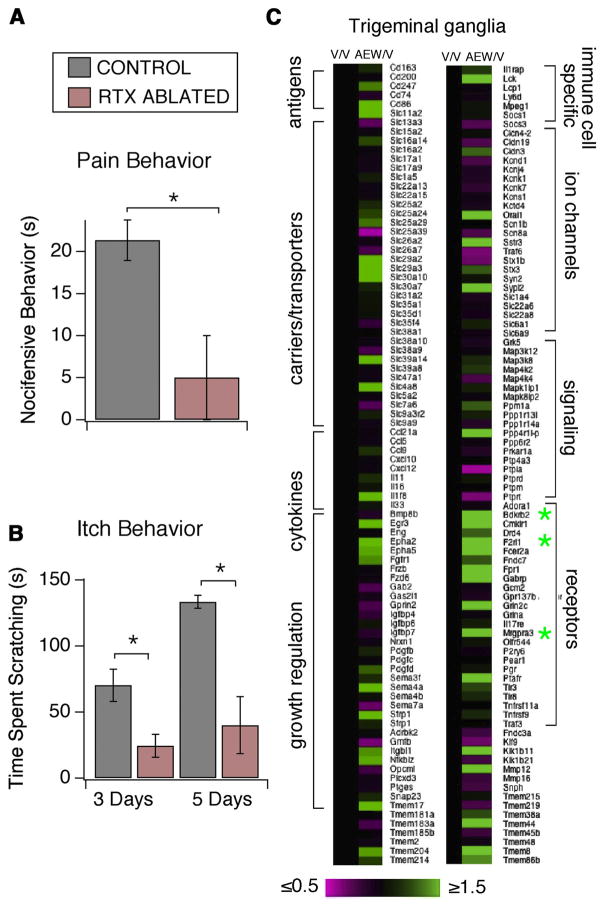Figure 3.
Sensory neurons are required for dry-skin-evoked itch behaviors. A, Mustard oil (MO, 10% in PBS)-evoked wiping was measured in wild-type, vehicle (CONTROL, 0.05% ascorbic acid, and 7% Tween 80, black), or RTX-injected (RTX ABLATED; 1 μg/ml RTX in 0.05% ascorbic acid, and 7% Tween 80, red) mice 3 d after injection. Nocifensive behavior was quantified for 2 min. All error bars represent SEM (n ≥ 4 mice/genotype, *p < 0.05). B, Dry-skin-evoked scratching was measured in wild-type vehicle (CONTROL, 0.05% ascorbic acid, and 7% Tween 80, black) or RTX-injected (RTX ABLATED; 1 μg/ml RTX in 0.05% ascorbic acid, and 7% Tween 80, red) mice on days three and five of treatment. The total time spent scratching was quantified for 20 min. Error bars represent SEM (n ≥ 9 mice/genotype; *p < 0.05) C, Gene expression was measured in whole TG isolated from VEH- and AEW-treated mice normalized to VEH-treated mice. Green indicates AEW-evoked increase in expression; magenta, AEW-evoked decrease in expression. Differentially expressed genes are clustered based on cellular function. Among differentially expressed receptors, the itch receptors MrgprA3 and Bdkr2 (*) were highly expressed in the TG of AEW-treated mice relative to VEH-treated mice.

